Discovering Dubai’s Gems: A Comprehensive Guide to the Best Pla…

Salman Mehdi
Blog Writer
Writer
SEO Content Manager
Photography
Word
WordPress

Dubai, a city of dreams rising from the desert sands, has firmly established itself as a global destination for luxury, innovation, and culture. With its stunning architecture, golden beaches, and vibrant markets, Dubai offers a wealth of experiences for every traveler. In this comprehensive guide, we will explore the best places to visit in Dubai, ensuring you uncover the city’s most captivating attractions.
1. Burj Khalifa: Reaching New Heights
Our journey begins with an icon that needs no introduction – the Burj Khalifa. As the tallest building in the world, it soars to a staggering 828 meters and dominates the Dubai skyline. Ascending to the top of this architectural masterpiece is an absolute must for any visitor. The observation decks on the 124th and 148th floors offer breathtaking panoramic views of the city, especially during sunset when Dubai transforms into a sea of glittering lights.

The Burj Khalifa is not just about its awe-inspiring height; it’s also a tribute to human ingenuity. At the multimedia exhibit inside, you can delve into the history of its construction, the challenges faced, and the technological innovations that brought this modern wonder to life. Top off your visit with a meal at one of the fine-dining restaurants within the Burj Khalifa, where you can savor world-class cuisine while taking in the mesmerizing views.
2. Al Fahidi Historical Neighborhood: A Glimpse of the Past
Stepping away from the glitz and glamour of modern Dubai, we journey to the Al Fahidi Historical Neighborhood, also known as Al Bastakiya. This charming area serves as a living testament to Dubai’s heritage, with its narrow winding lanes, traditional wind-tower architecture, and serene courtyards.
Begin your exploration at the Dubai Museum, housed within the 200-year-old Al Fahidi Fort. Here, you’ll gain insights into the city’s remarkable transformation from a humble fishing village to a bustling metropolis. As you wander through the art galleries, visit the Coffee Museum, and peruse quaint shops offering handmade crafts, you’ll find yourself immersed in the simplicity and authenticity of Emirati culture.
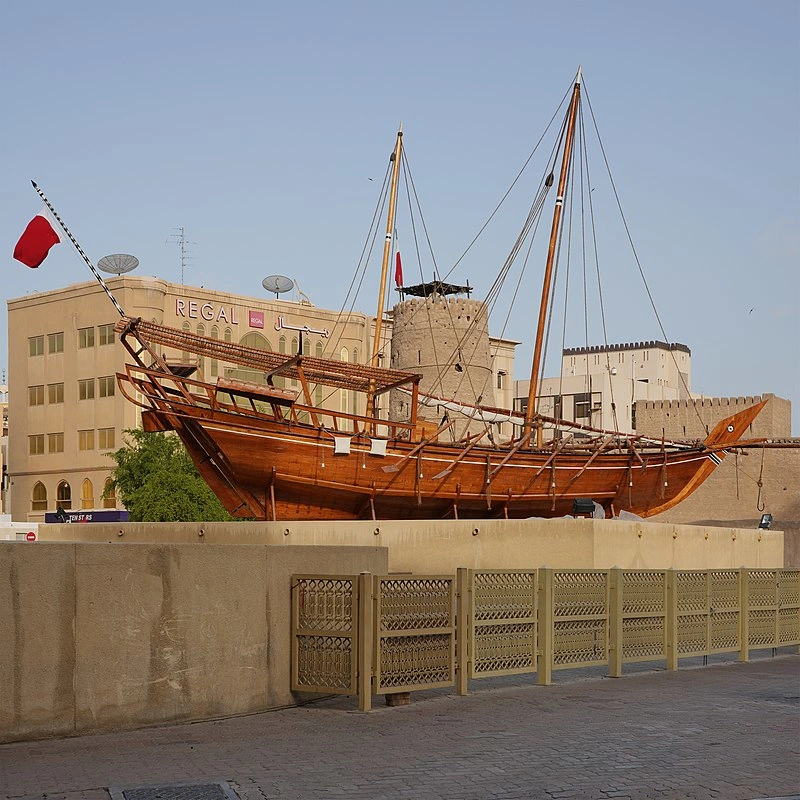
3. Dubai Fountain Show: A Symphony of Water and Light
As the sun sets, venture to the base of the Burj Khalifa to witness the enchanting Dubai Fountain Show. This captivating water fountain spectacle unfolds in the heart of Downtown Dubai. Set against the backdrop of the Burj Khalifa, the fountain’s choreographed dance to an array of musical genres is a mesmerizing display of water jets shooting as high as 150 meters into the night sky.
The Dubai Fountain Show stands as a testament to the city’s commitment to pushing creative and engineering boundaries. The symphony of water, light, and music takes place at various times throughout the day and night, offering multiple opportunities to witness its splendor. Find a vantage point along the shores of Lake Burj Khalifa, and prepare to be entranced by this sensory extravaganza.
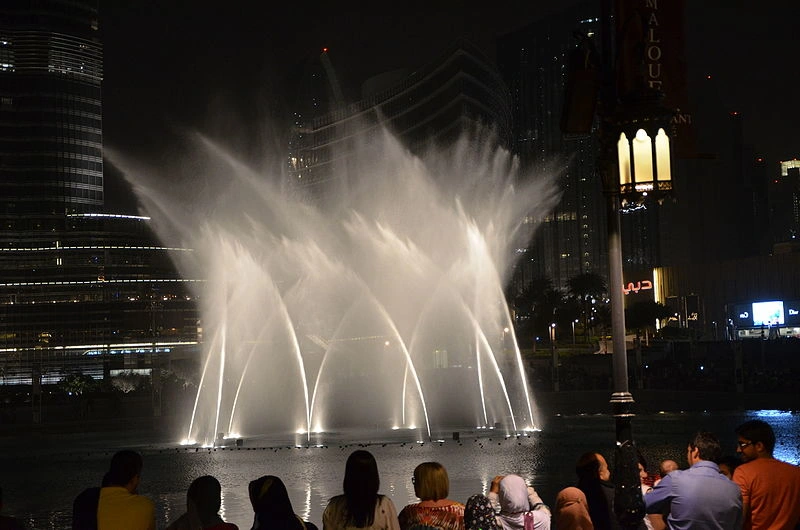
4. Dubai Marina: Where Luxury Meets Serenity
Our next destination is the Dubai Marina, a man-made canal city that epitomizes luxury living. Take a leisurely stroll along the Marina Walk, a picturesque promenade lined with cafes and restaurants, and marvel at the architectural wonders that grace the skyline. The Marina’s stunning skyscrapers house some of Dubai’s most sought-after residences, offering breathtaking views of the water and beyond.
For a unique experience, embark on a dhow cruise along the Dubai Marina. These traditional wooden boats have been transformed into floating restaurants, offering exquisite dining experiences beneath the starlit Arabian sky. As you glide along the tranquil waters, you’ll be treated to panoramic views of the illuminated cityscape, its reflection shimmering on the water’s surface.

5. Dubai Desert Safari: Into the Heart of the Sands
Escape the urban hustle and venture into the mystical Dubai desert on an unforgettable desert safari. This immersive experience takes you on a journey through the golden sands of the Arabian Desert, allowing you to discover the raw beauty of this ancient landscape.
Feel the adrenaline rush as you engage in thrilling activities like dune bashing, sandboarding, and quad biking. As the sun sets over the dunes, you’ll be enchanted by the serene beauty of the desert. Continue your adventure by visiting a traditional Bedouin camp, where you can savor a delectable BBQ dinner, watch captivating cultural performances, and even try your hand at traditional henna painting.
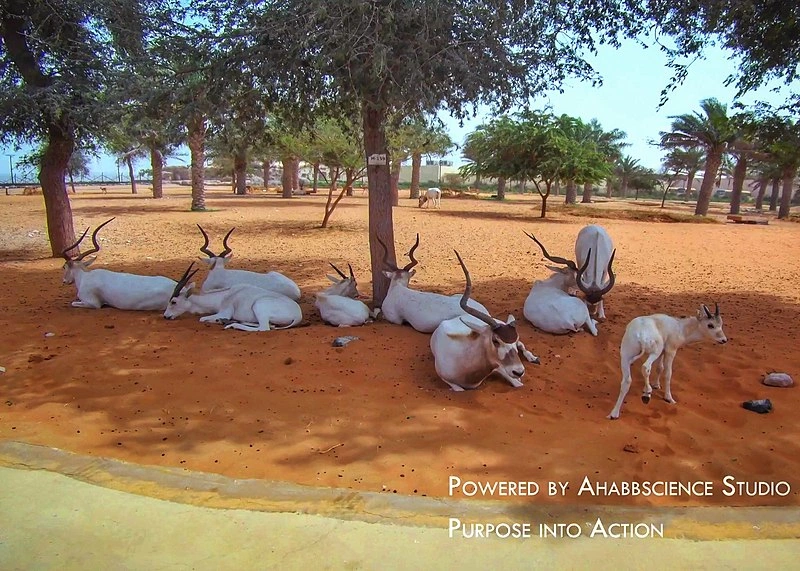
6. The Enigmatic Dubai Souks: Shopper’s Paradise
Dubai is renowned for its vibrant and bustling souks, each offering a unique shopping experience. Begin your journey at the Gold Souk, a dazzling treasure trove of gold, silver, and precious gemstones. Whether you’re in search of exquisite jewelry or simply want to marvel at the craftsmanship, this is the place to be.
Next, immerse yourself in the Spice Souk, a sensory delight filled with the aromatic scents of spices, herbs, and traditional perfumes. Lose yourself in the labyrinthine lanes and let your senses guide you to hidden treasures. Don’t forget to embrace the art of haggling; it’s all part of the adventure.
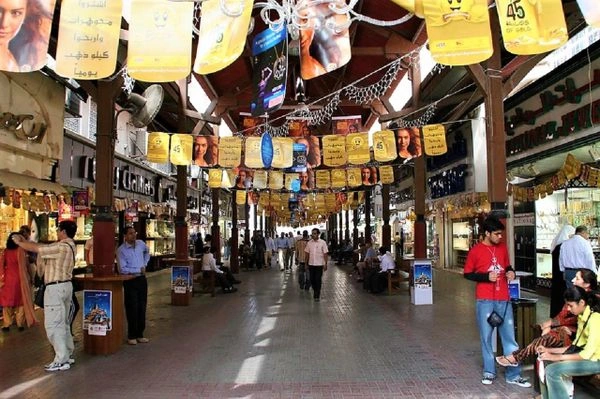
7. Palm Jumeirah: Island of Extravagance
Our next stop is Palm Jumeirah, an engineering marvel that has redefined luxury living. Shaped like a palm tree, this man-made island is home to some of Dubai’s most luxurious resorts, including the iconic Atlantis, The Palm. Take a leisurely walk along the Palm’s crescent-shaped boardwalk, offering stunning views of the Arabian Gulf and the Dubai skyline.
For those seeking adventure, Aquaventure Waterpark at Atlantis is a must-visit. With thrilling water slides, a pristine beach, and opportunities to swim with dolphins, it promises a day filled with excitement. Whether you’re staying at one of the island’s resorts or simply visiting for the day, Palm Jumeirah offers a slice of paradise.
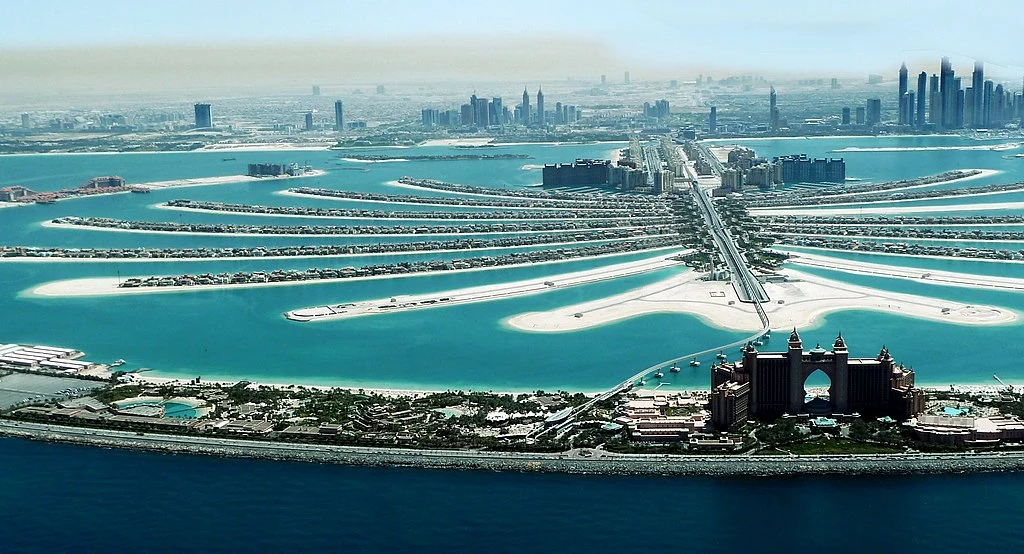
8. The Dubai Mall: Retail Therapy Extravaganza
Indulge in some retail therapy at The Dubai Mall, one of the world’s largest shopping and entertainment destinations. This sprawling complex offers a diverse range of experiences, from high-end fashion boutiques to immersive entertainment options.
Explore the mall’s designer stores, marvel at the indoor ice rink, and be captivated by the incredible Dubai Aquarium & Underwater Zoo, which houses thousands of aquatic animals. With a multitude of dining options, including fine dining restaurants and casual cafes, you can refuel while continuing your shopping spree.
9. Jumeirah Beach: Sun, Sand, and Serenity
Conclude your Dubai adventure with a visit to the idyllic Jumeirah Beach. With its pristine white sands and azure waters, this beach is the perfect place to unwind and soak up the sun. Stroll along the corniche, take a dip in the sea, or simply relax on the soft sands while gazing at the iconic Burj Al Arab in the distance.
Jumeirah Beach also offers a range of water sports and activities for the adventurous traveler. Whether you’re into jet skiing, parasailing, or simply building sandcastles, this beach provides an ideal backdrop for creating lasting memories.
As you explore these best places to visit in Dubai, you’ll uncover a city that seamlessly blends tradition and modernity, luxury and culture, all against the backdrop of breathtaking landscapes. Dubai invites you to embark on a journey of discovery and wonder, where every corner reveals a new facet of this remarkable city.
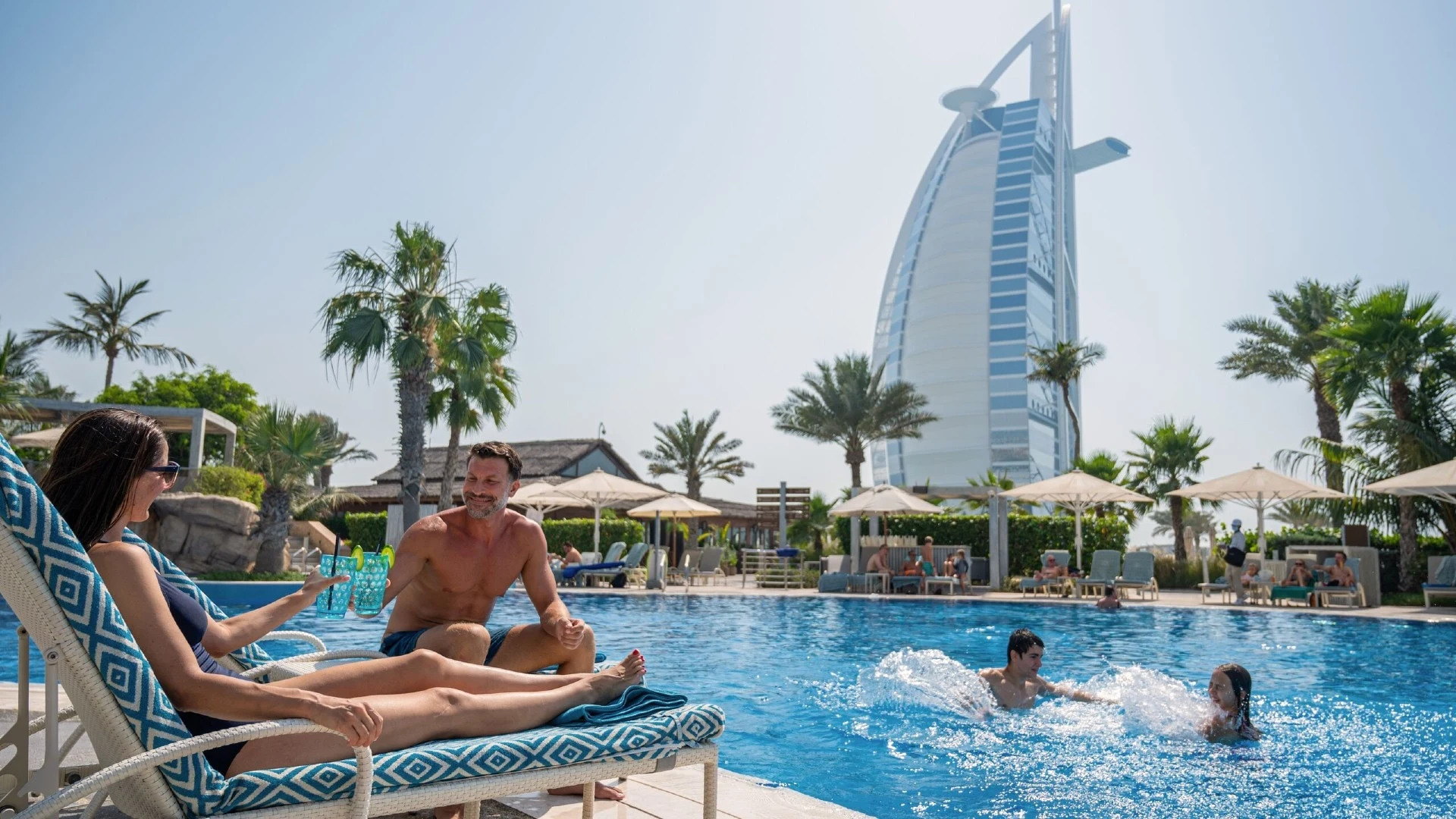
Explore Dubai’s top attractions, from the iconic Burj Khalifa to the tranquil Jumeirah Beach. Discover the best places to visit in this comprehensive guide to Dubai’s hidden gems and must-see landmarks.
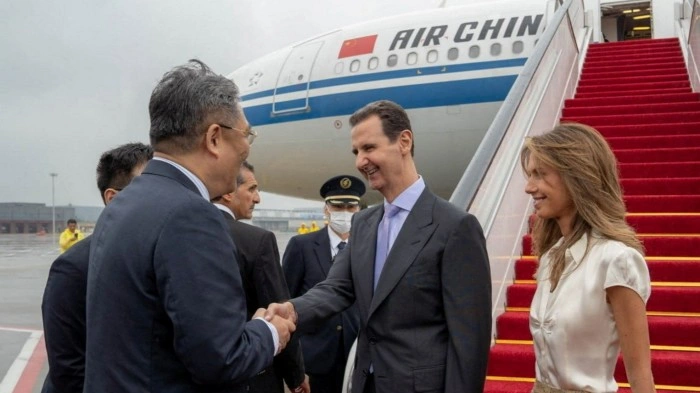
Syria’s president Bashar al-Assad, centre, and his wife Asma arrive in Hangzhou, China, on Thursday © Syrian Presidency/Handout/Reuters
Introduction
The recent visit of Syrian President Bashar al-Assad to China marks a significant development in the ongoing Syrian civil war and the evolving dynamics in the Middle East. After twelve years since the outbreak of the conflict, Assad’s visit underscores China’s growing interest in the region and its desire to enhance its diplomatic profile. This article explores the key aspects of this visit, its implications for Syria, the Middle East, and China’s evolving role in global politics.
Assad’s Landmark Visit
In his first visit to China since the civil war began, Bashar al-Assad’s arrival signifies a potential shift in the diplomatic landscape surrounding Syria. Assad’s regime has made substantial territorial gains in recent years, thanks to military support from Russia and Iran. However, he remains isolated in the Western world, rarely venturing abroad. His visit to China signifies an attempt to diversify international relationships, especially given the limited economic and reconstruction assistance from his primary sponsors, Russia and Iran.
China’s Diplomatic Ambitions
China’s growing diplomatic influence in the Middle East is increasingly evident. Traditionally, China has prioritized trade partnerships in the region, avoiding direct involvement in politics. However, recent developments challenge this stance. China played a surprising role in brokering an agreement between regional rivals Saudi Arabia and Iran, signaling its desire to expand its influence in a region long dominated by the United States. Analysts believe that China sees an opportunity to position itself as a diplomatic juggernaut in addition to its economic prowess.
Reconstruction Challenges
One of the crucial aspects of Assad’s visit is the potential discussion on reconstruction efforts in Syria. The war has left the country in ruins, requiring massive investments to rebuild infrastructure and the economy. While there has been speculation that Syria would seek China’s support for this endeavor, Chinese companies have been hesitant due to domestic economic challenges, including a slowdown in their home market. The economic woes facing Syria, coupled with Western sanctions, further complicate reconstruction efforts.
Syria’s Economic Crisis
Syria’s economic woes have deepened, leading to anti-regime protests in recent weeks. The Syrian pound has reached record lows, and the country struggles to attract foreign investment for reconstruction. To address its economic crisis, Syria has turned to unconventional sources of income, such as the export of Captagon, a highly addictive amphetamine. This raises questions about the sustainability of Syria’s economic model and the role of such exports in generating hard currency.
China’s Dependence on the Middle East
China’s increasing interest in the Middle East is driven by its dependence on the region for oil and gas imports. As the world’s largest energy consumer, China seeks stability in the region to secure its energy supply. The Middle East is crucial for China’s economic growth and energy security, making it imperative for Beijing to engage in diplomatic initiatives.
Implications for Regional Powers
Assad’s visit to China may have broader implications for regional powers and their stance on Syria. Saudi Arabia’s recent efforts to reintegrate Syria into the Arab League signify a regional shift towards accepting Assad’s regime. China’s involvement could further encourage countries in the region to reevaluate their positions on Syria and promote diplomatic engagement as a means to influence the conflict’s outcome.
Challenges Ahead
While China’s diplomatic engagement in Syria carries potential benefits, it also poses challenges. Beijing must carefully assess the feasibility of investing in a war-torn, economically devastated nation with a fragile government. Moreover, China’s involvement could exacerbate tensions with the United States in another Middle East battleground, adding complexity to its global diplomatic strategy.
Conclusion
Assad’s visit to China highlights the changing dynamics in the Middle East and China’s evolving role as a diplomatic player in the region. While reconstruction efforts in Syria remain challenging, China’s growing interest in the Middle East suggests a broader shift in global politics. As regional powers recalibrate their positions on Syria, China’s influence in the region is likely to expand, offering both opportunities and risks in the pursuit of its diplomatic ambitions.
Syrian President Bashar al-Assad’s visit to China signifies a potential shift in Middle Eastern diplomacy. Explore the implications of this visit for Syria, the region, and China’s growing global role in this comprehensive analysis of China-Syria relations.
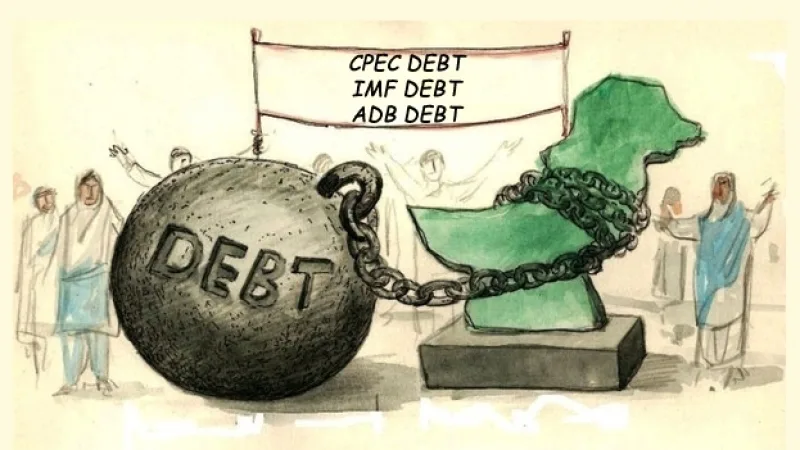
State-Owned Enterprises (SOEs) in Pakistan have long been plagued by corruption, mismanagement, and inefficiency. The consequences of this mismanagement have led to unnecessary expenditures, mounting losses, and a burden on the national economy. This issue demands urgent attention and reform.
A Legacy of Corruption
For decades, SOEs have been filled with politically appointed individuals, often referred to as “sifarshis.” This practice has resulted in bloated payrolls and financial losses. The overall performance of these SOEs has consistently fallen below par, with cumulative losses reaching a staggering Rs500 billion.
The Tale of Profitable Enterprises
While examining the financial figures of profit-making enterprises until the fiscal year 2020, it becomes evident that the aggregate profits of SOEs amounted to around Rs330 billion. However, a significant portion of these profits, approximately Rs185 billion, was attributed to oil and gas companies. Other sectors have not fared as well.
Root Causes of the Problem
Several factors contribute to the dismal state of SOEs, including a lack of autonomy, external interference, weak management, limited accountability, and inappropriate boards. These issues have persisted over time and have been major contributors to the financial losses incurred by these enterprises.
Privatization as a Viable Solution
To address this systemic issue, the government must consider privatization as a viable solution. Many SOEs, whether profitable or not, have been poorly managed by retired government officers rather than professional managers. Additionally, some have operated in monopolistic positions without facing real competition.
In cases where privatization is not feasible, “strategic” SOEs must undergo a significant change in their management framework. They should be granted genuine autonomy and protected from political interference. These enterprises should be led by professional managers, and government subsidies should no longer be provided.
A Call for Action
Dr. Shamshad, who has taken on the responsibility of overseeing this reform, deserves our support and commendation. Tackling the deep-seated issues within SOEs is no small feat, and it is unlikely that any political government will have the courage to initiate these changes. However, the potential savings that could result from these reforms are substantial and could significantly benefit Pakistan.
Progress on the Horizon
While the Finance Division works to establish the Central Monitoring Unit (CMU) as part of the International Monetary Fund (IMF) Stand-by Arrangement, it is crucial to complete the hiring of professional staff. This unit will play a pivotal role in monitoring and improving the performance of SOEs.
Furthermore, the draft SOEs policy is nearing finalization, with input from stakeholders and the general public. The policy outlines a comprehensive framework for managing the fiscal risks associated with SOEs and ensuring their efficient operation.
In conclusion, the reform of SOEs is a critical step in securing Pakistan’s economic future. By addressing corruption, mismanagement, and inefficiency, these enterprises can become valuable contributors to the nation’s prosperity. The success of these reforms will not only benefit Pakistan’s economy but also uphold the principles of transparency and accountability.
#SOEreform #PakistanEconomy #AntiCorruption #FinancialRecovery #Privatization #EconomicGrowth #TransparencyMatters #ProfessionalManagement #Accountability #DrShamshadLeadership



